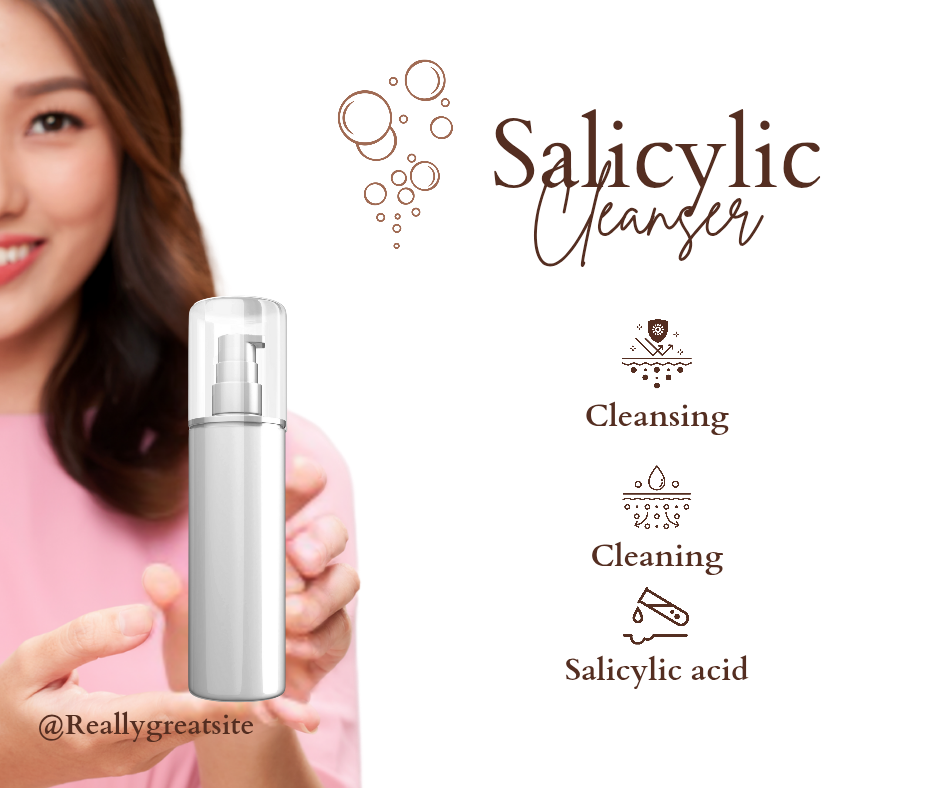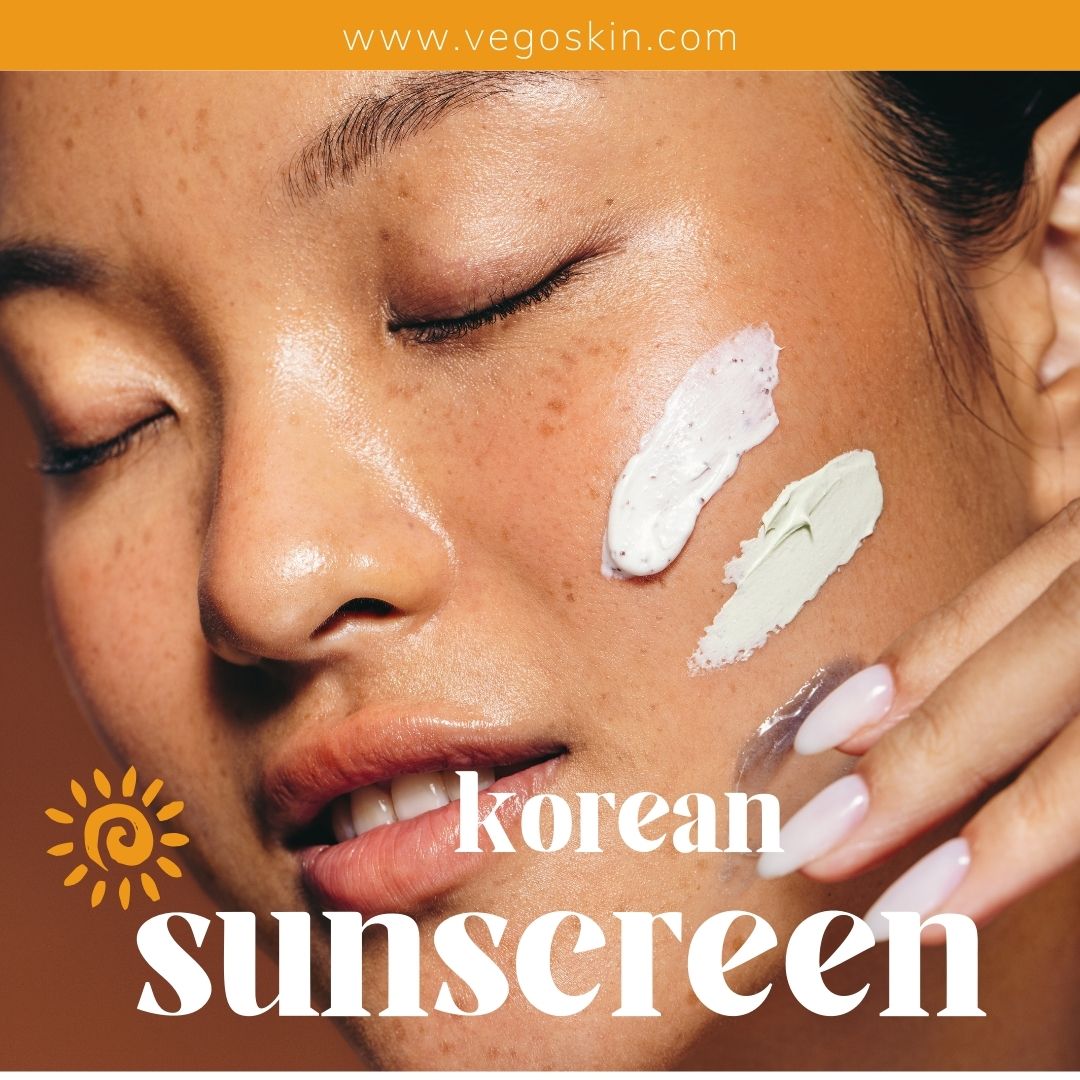The Truth About Salicylic Acid Cleansers: Blackheads and Whiteheads
If you’ve ever dealt with stubborn blackheads or whiteheads, you’ve probably heard about salicylic acid cleansers. They’re a staple in many skincare routines, praised for their ability to tackle acne and unclog pores. But what’s the real deal with these products? Are they the miracle solution they’re often made out to be, or is there more to the story? In this article, we’ll dive deep into The Truth About Salicylic Acid Cleansers: Blackheads and Whiteheads, exploring how they work, their benefits, potential drawbacks, and tips for using them effectively. Let’s clear up the confusion and get your skin glowing!
What Is Salicylic Acid, Anyway?
Salicylic acid is a beta-hydroxy acid (BHA) derived from willow bark. It’s a powerhouse ingredient in skincare because of its ability to exfoliate the skin and penetrate deep into pores. Unlike alpha-hydroxy acids (AHAs), which work on the skin’s surface, salicylic acid is oil-soluble, meaning it can dissolve the sebum (oil) that clogs pores, making it especially effective for acne-prone skin.
When it comes to The Truth About Salicylic Acid Cleansers: Blackheads and Whiteheads, understanding how salicylic acid functions is key. It works by breaking down the bonds between dead skin cells, allowing them to slough off more easily. This exfoliation process helps prevent pores from becoming blocked, which is a major cause of blackheads and whiteheads. According to the American Academy of Dermatology, salicylic acid is one of the most recommended ingredients for acne treatment due to its anti-inflammatory and exfoliating properties.
But not all salicylic acid cleansers are created equal. The concentration, formulation, and method of use can significantly impact their effectiveness. Let’s break it down.
Blackheads and Whiteheads: The Culprits
Before we dive deeper into The Truth About Salicylic Acid Cleansers: Blackheads and Whiteheads, let’s talk about what blackheads and whiteheads are. Both are types of acne known as comedones, but they differ in how they form.
- Blackheads (open comedones): These occur when pores become clogged with sebum, dead skin cells, and bacteria. The pore remains open, and the contents oxidize when exposed to air, giving blackheads their dark appearance. They’re often found on the nose, chin, and forehead.
- Whiteheads (closed comedones): These form similarly but are covered by a thin layer of skin, preventing oxidation. This gives them their white or flesh-colored appearance. Whiteheads can be trickier to treat because they’re sealed off.
Both blackheads and whiteheads thrive in oily skin or environments where dead skin cells accumulate. That’s where salicylic acid cleansers come in, targeting the root causes of these pesky blemishes.
How Salicylic Acid Cleansers Work Their Magic
So, what makes salicylic acid cleansers so effective for blackheads and whiteheads? It’s all about their ability to get to the source of the problem. Here’s how they work:
- Deep Pore Cleansing: Salicylic acid penetrates the oil in your pores, dissolving the gunk that leads to blackheads and whiteheads. This makes it easier for your skin to shed dead cells and excess sebum.
- Exfoliation: By loosening the bonds between dead skin cells, salicylic acid prevents the buildup that clogs pores in the first place.
- Anti-Inflammatory Benefits: Salicylic acid reduces redness and swelling, which can make existing acne less noticeable.
- Oil Control: Many salicylic acid cleansers help regulate sebum production, creating a less hospitable environment for comedones.
A study published in the Journal of Clinical and Aesthetic Dermatology found that salicylic acid at concentrations of 0.5% to 2% is effective for treating mild to moderate acne, including blackheads and whiteheads. Most over-the-counter cleansers fall within this range, making them accessible for daily use.
But here’s a reality check: while salicylic acid cleansers are powerful, they’re not an overnight fix. Consistency is key, and it may take a few weeks to see noticeable results. Patience is part of The Truth About Salicylic Acid Cleansers: Blackheads and Whiteheads.
Choosing the Right Salicylic Acid Cleanser
Not all cleansers are created equal, and picking the right one for your skin type is crucial. Here are some factors to consider:
- Concentration: Most over-the-counter salicylic acid cleansers range from 0.5% to 2%. Higher isn’t always better—stronger concentrations can irritate sensitive skin. If you’re new to salicylic acid, start with a lower concentration, like 0.5%, and work your way up.
- Formulation: Look for a cleanser that suits your skin type. For oily skin, a gel-based cleanser might be best. For dry or sensitive skin, opt for a creamier formula with hydrating ingredients like glycerin or hyaluronic acid.
- Additional Ingredients: Some cleansers combine salicylic acid with soothing ingredients like aloe vera or chamomile to reduce irritation. Others may include benzoyl peroxide or tea tree oil for extra acne-fighting power.
- pH Level: Salicylic acid works best at a slightly acidic pH (around 3-4). Check product reviews or descriptions to ensure the cleanser is formulated for maximum efficacy.
Popular options include the CeraVe Foaming Facial Cleanser with 0.5% salicylic acid for gentle exfoliation and the Neutrogena Oil-Free Acne Wash, which contains 2% salicylic acid for more intensive treatment. Always patch-test a new product to avoid unexpected reactions.
The Benefits of Using Salicylic Acid Cleansers
When used correctly, salicylic acid cleansers offer a range of benefits for those struggling with blackheads and whiteheads. Here’s why they’re worth incorporating into your routine:
- Unclogs Pores: By dissolving oil and dead skin cells, salicylic acid prevents and treats clogged pores, reducing the appearance of blackheads and whiteheads.
- Reduces Acne: Regular use can decrease the frequency and severity of breakouts, making your skin look clearer and smoother.
- Improves Skin Texture: The exfoliating properties of salicylic acid leave your skin feeling softer and more even-toned.
- Prevents Future Breakouts: By keeping pores clear, salicylic acid cleansers help stop new blackheads and whiteheads from forming.
For those with oily or combination skin, salicylic acid cleansers can be a game-changer. They’re also versatile enough to be used as part of a double-cleansing routine or as a standalone cleanser, depending on your needs.
Potential Downsides and How to Avoid Them
While salicylic acid cleansers are generally safe, they’re not without potential drawbacks. Understanding these can help you use them effectively and avoid common pitfalls. Here’s what to watch out for:
- Dryness and Irritation: Salicylic acid can be drying, especially for those with sensitive or dry skin. To minimize this, use a cleanser with a lower concentration and follow up with a hydrating moisturizer. The National Eczema Association recommends pairing exfoliating ingredients with emollients to maintain skin hydration.
- Overuse: Using a salicylic acid cleanser too often (more than twice daily for most people) can strip your skin’s natural oils, leading to irritation or rebound oil production. Stick to once or twice daily, depending on your skin’s tolerance.
- Sun Sensitivity: Salicylic acid can make your skin more sensitive to the sun. Always apply a broad-spectrum sunscreen with at least SPF 30, like La Roche-Posay Anthelios, during the day.
- Not a Cure-All: If you have severe acne or cystic acne, salicylic acid cleansers alone may not be enough. Consult a dermatologist for a comprehensive treatment plan.
To avoid these issues, start slow—perhaps using the cleanser every other day—and monitor how your skin responds. Hydration and sun protection are non-negotiable when using exfoliating ingredients.
How to Use a Salicylic Acid Cleanser for Best Results
To get the most out of your salicylic acid cleanser, follow these tips:
- Cleanse Properly: Wet your face with lukewarm water, apply a small amount of cleanser, and massage gently for 30-60 seconds. Focus on areas prone to blackheads and whiteheads, like the T-zone. Rinse thoroughly.
- Don’t Overdo It: For most people, cleansing with salicylic acid once or twice daily is enough. Over-cleansing can disrupt your skin barrier.
- Follow with Moisturizer: After cleansing, apply a lightweight, non-comedogenic moisturizer to lock in hydration. Look for products with ingredients like ceramides or niacinamide for added skin barrier support.
- Incorporate into a Routine: Pair your cleanser with other acne-fighting products, like a retinoid or benzoyl peroxide treatment, for a synergistic effect. The Skin Cancer Foundation emphasizes the importance of a consistent skincare routine for long-term results.
- Be Patient: It can take 4-8 weeks to see significant improvements in blackheads and whiteheads. Stick with it, and don’t expect overnight miracles.
Myths and Misconceptions About Salicylic Acid Cleansers
There’s a lot of misinformation floating around about salicylic acid cleansers. Let’s debunk some common myths to uncover The Truth About Salicylic Acid Cleansers: Blackheads and Whiteheads:
- Myth 1: Salicylic Acid Cleansers Work Instantly: While they start working right away, visible results take time. Don’t expect your blackheads to vanish after one use.
- Myth 2: More Is Better: Using a higher concentration or cleansing multiple times a day can irritate your skin and worsen acne. Stick to recommended usage.
- Myth 3: They’re Only for Oily Skin: While ideal for oily skin, salicylic acid cleansers can benefit other skin types when formulated with hydrating ingredients.
- Myth 4: They Can Remove Blackheads Completely: Salicylic acid can reduce blackheads but may not eliminate deeply embedded ones. For stubborn blackheads, professional extractions by a dermatologist may be needed.
By understanding these myths, you can set realistic expectations and use salicylic acid cleansers effectively.
Complementary Treatments for Blackheads and Whiteheads
While salicylic acid cleansers are a great starting point, combining them with other treatments can enhance results. Here are some options:
- Retinoids: Prescription or over-the-counter retinoids, like adapalene, speed up cell turnover and prevent clogged pores. Differin Gel is a popular OTC option.
- Clay Masks: Masks with kaolin or bentonite clay can absorb excess oil and draw out impurities. Try one once or twice a week.
- Chemical Exfoliants: Pairing salicylic acid with an AHA like glycolic acid can address both surface and deep pore concerns.
- Professional Treatments: For persistent blackheads or whiteheads, consider dermatological treatments like chemical peels or extractions.
Always introduce new products gradually to avoid overwhelming your skin. Consult a dermatologist if you’re unsure about combining treatments.
Real-Life Tips from Skincare Enthusiasts
To make this article more humanized, let’s hear from real people who’ve used salicylic acid cleansers. On platforms like Reddit’s SkincareAddiction community, users often share their experiences:
- “I started using a 1% salicylic acid cleanser twice a day, and my nose blackheads are way less noticeable after a month. Moisturizing afterward is a must!” – u/SkinLover123
- “I have sensitive skin, so I use a gentle salicylic cleanser every other day. It’s helped with whiteheads without making my skin red.” – u/GlowUpGuru
These anecdotes highlight the importance of tailoring your routine to your skin’s needs and being consistent.
Final Thoughts on The Truth About Salicylic Acid Cleansers: Blackheads and Whiteheads
In the world of skincare, salicylic acid cleansers are a tried-and-true option for tackling blackheads and whiteheads. They work by exfoliating, unclogging pores, and reducing inflammation, making them a go-to for acne-prone skin. However, they’re not a one-size-fits-all solution, and proper use is key to avoiding irritation. By choosing the right cleanser, incorporating it into a balanced routine, and being patient, you can achieve clearer, smoother skin.
The journey to clear skin is personal, and The Truth About Salicylic Acid Cleansers: Blackheads and Whiteheads is that they’re a powerful tool—but not a magic wand. Pair them with good skincare habits, like moisturizing and sun protection, and consult a dermatologist for personalized advice if needed. Ready to give it a try? Your skin will thank you for it.



